Suite 3, Ground Floor, The Gateway,
312 St Kilda Road, Southbank, VIC, 3006
Strength Training Exercises for Dancers
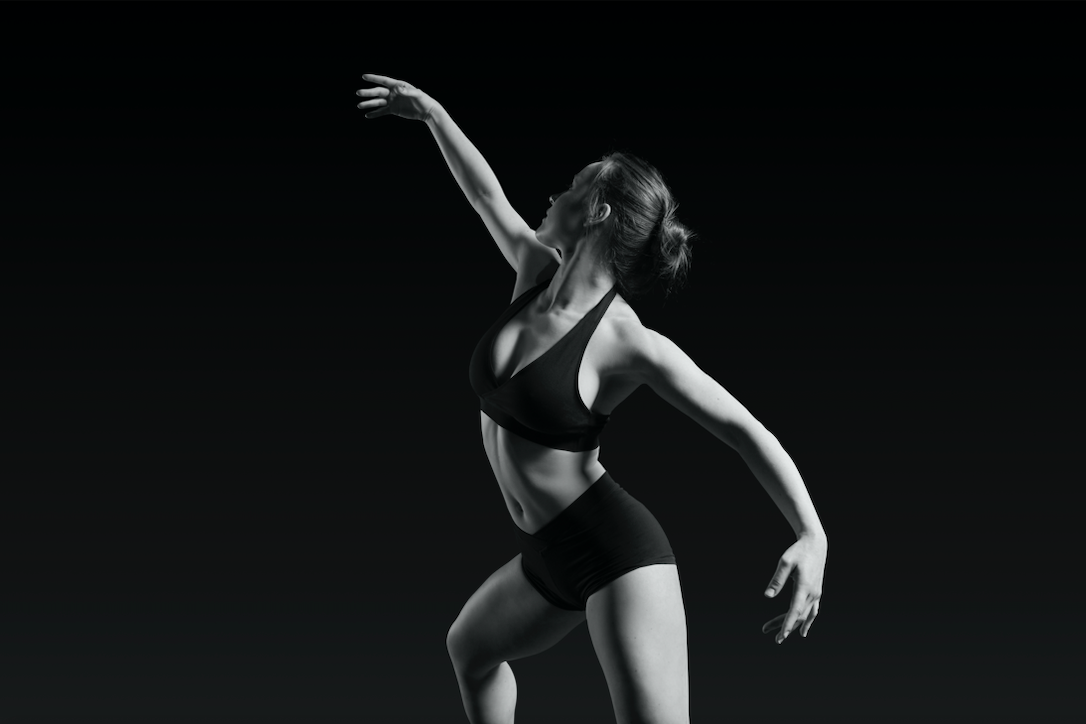
What strength training should I be doing?
There are many benefits to adding strength training as a dancer. Improving your strength will increase your tone, control and endurance of your muscles. It can sometimes be difficult to decide where to begin your strength training. Research has shown that dancers who complete regular strength training, reduce their risk of injury. So where should you start?
Every dance style has slightly different demands on the body than others. This means that different parts of the body will have increased the risk of injury depending on the type of dancing that you do. For example, we have seen through research that ballet dancers are more likely to obtain foot and ankle injuries, whereas contemporary dancers are more likely to injure their knees or backs. Based on this, we have put together a basic strengthening program for a ballet and contemporary dancer to complete.
Ballet dancers
- Calf raises
- Keeping even weight through your toes, slowly rise up on the ball of your foot and then lower down
- Take care not to scrunch your toes and maintain a straight line from the front of the ankle to between the first and second toe
- Slow controlled movements, 2 seconds up, 2 seconds down
- Aim to complete 25 on each leg
- Start double leg to make easier
- Add resistance band to make for challenging
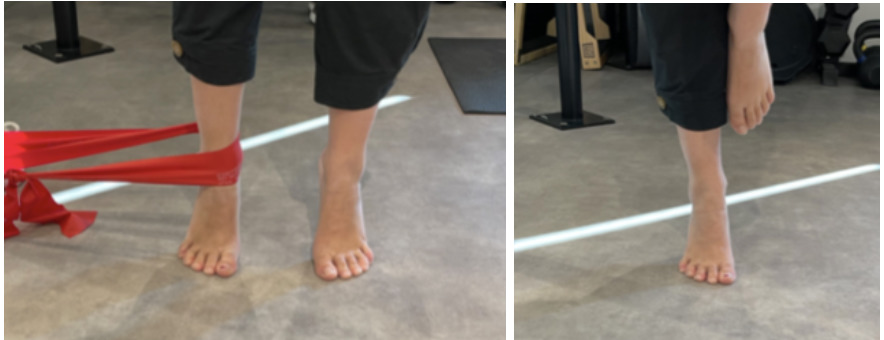
- Toe presses
- Use a theraband around one of your toes, to hold it like a hammock
- Keep your foot relaxed on the floor as you lift up your toe, without any activation
- Then actively, press your toe down to the floor against the resistance band
- Ensure you keep your toes long and don’t scrunch
- Complete 10 presses per toe
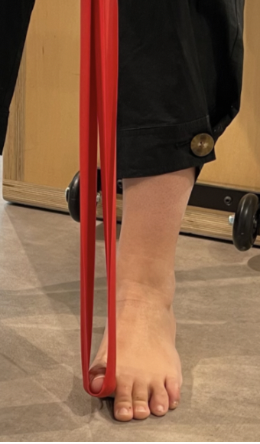
- Pointing into pilates ball
- Have pilates ball or pillow between your foot and the wall
- Very slowly, point your foot into the ball
- Focus on lengthening through your heel as you point your foot
- Then slowly reverse this same movement, to come back into the relaxed starting position
- Complete 15-20repetitions
- Add a resistance band to make the movement more challenging
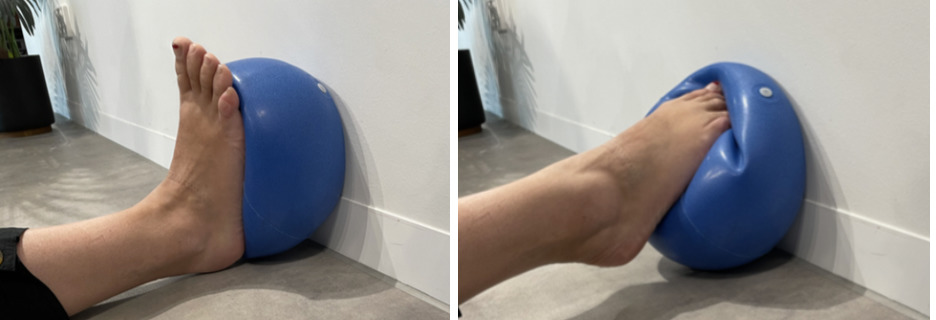
- Tippy bird
- Standing in a mini squat on one leg, with the other leg behind you for balance
- Keep your knee bent and hips back
- Fold from your hips to lower your chest towards your leg, then lift back up to the starting position
- Complete 15-20reps each leg
- Lift your back leg to make it more of a balance challenge
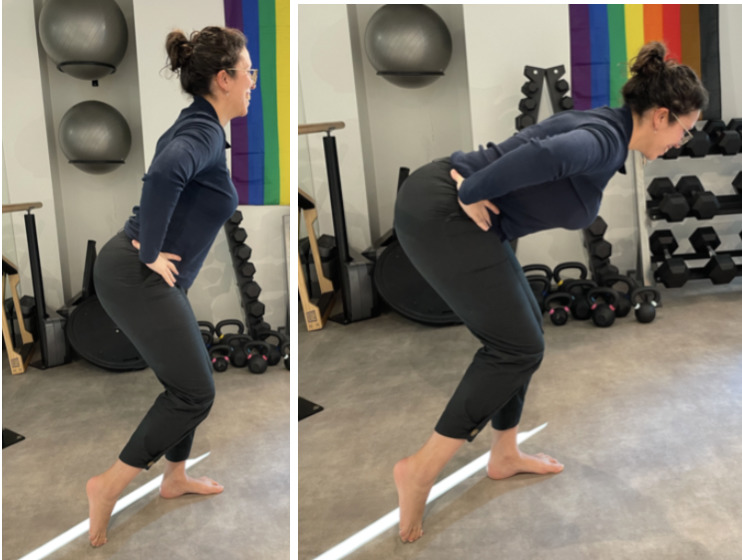
Contemporary dancers
- Squats
- Begin with your legs hip distance apart
- Bend from your knees and hips to lower your body, then press through your heels to stand again
- Add weight to this movement to make it more challenging for you
- Complete 3 sets of 10 reps
- Lunges
- Legs hip distance apart, one leg in front of the other
- Bend both legs to touch your back knee onto the floor
- Then press through your heels to lift up to standing
- Add weight to this movement to make it more challenging for you
- Complete 3 sets of 10 reps each side
- Side plank
- Press up onto your forearms and feet to lift your hips up in the air
- Keep your forearm, hips and knees aligned
- Hold this position for 30 seconds, repeat 3 times
- Add hip dips whilst you are up in the side plank position for a challenge
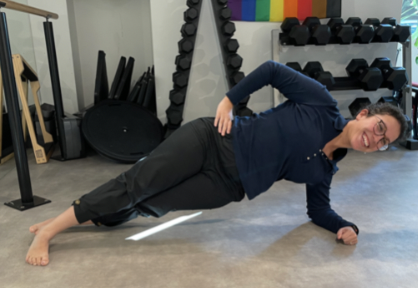
- Paloff press
- Using either a cable machine or theraband
- Pull the band/handle out to the middle of your body, arms bent to keep it close to your chest
- Use your core to control and hold your position as you press your arms straight out in front of you, then return back
- Complete 15-20 repetitions each side
- Complete on one leg to make it more difficult
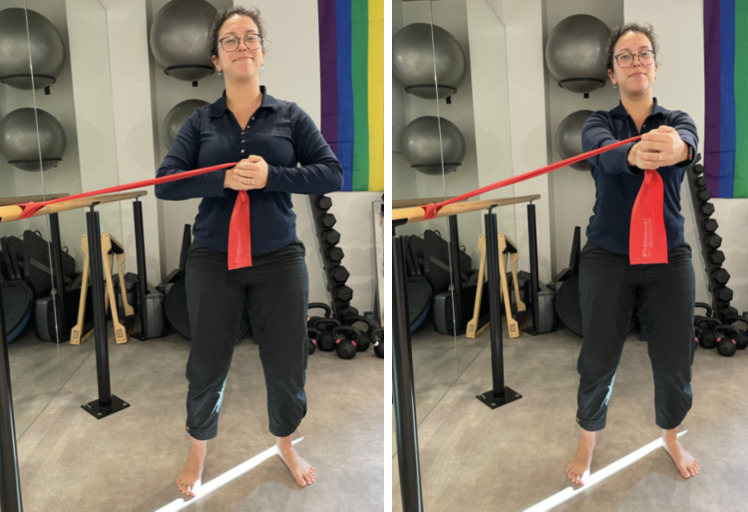
Give these exercises a try, aim to complete regular strength training 2-3 times per week to assist with consistency and prevent injury from occurring. If you have any questions, please consult your healthcare professional for further advice.
References
Ávila-Carvalho, L., Conceição, F., Escobar-Álvarez, J. A., Gondra, B., Leite, I., & Rama, L. (2022). The Effect of 16 Weeks of Lower-Limb Strength Training in Jumping Performance of Ballet Dancers. Frontiers in physiology, 12, 774327. https://doi.org/10.3389/fphys.2021.774327
Koutedakis, Y., Clarke, F., Wyon, M., Aways, D., & Owolabi, O. (2009). Muscular Strength: Applications for Dancers. Medical Problems of Performing Artists, 24. 10.21091/mppa.2009.4032, available at: https://www.researchgate.net/publication/44392574_Muscular_Strength_Applications_for_Dancers


